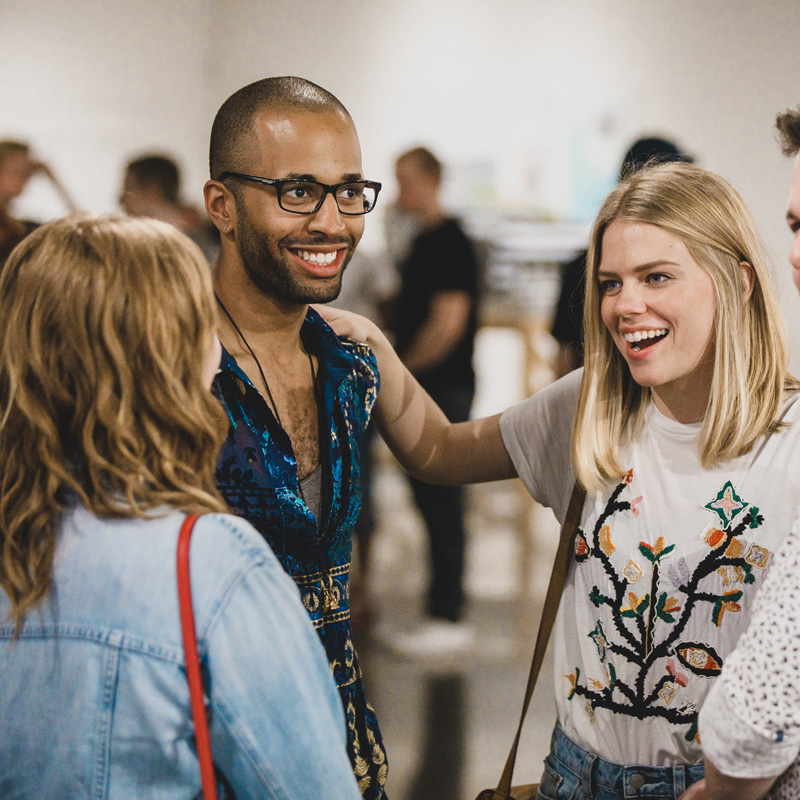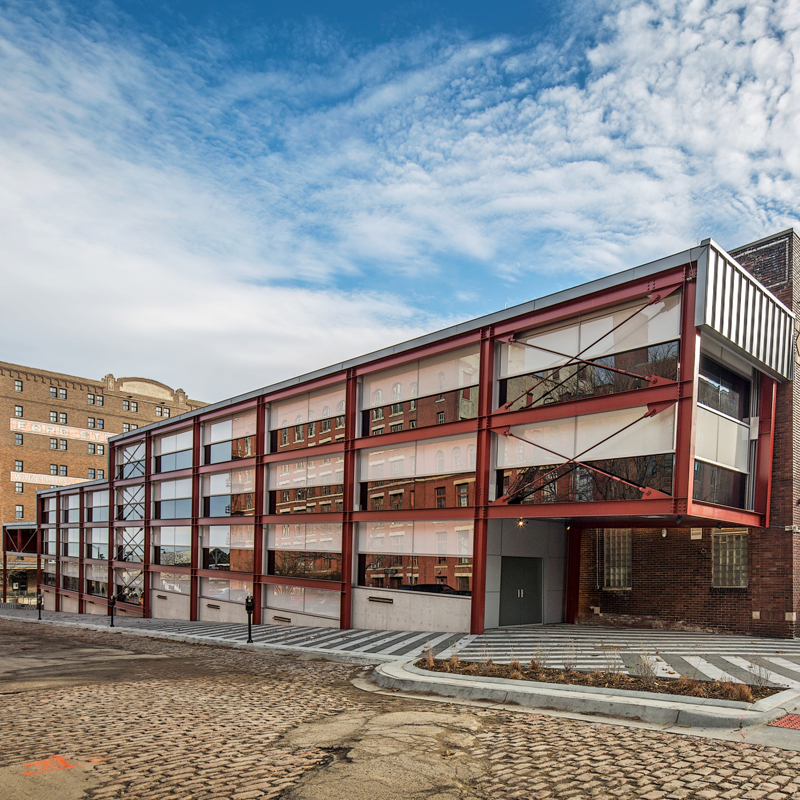Browse all current and upcoming events, exhibitions, performances, lectures, and educational workshops exploring creativity from all angles.
Delve deeply into topical explorations with our seasons, collections of exhibits, performances, lectures, and educational workshops centered on a central notion.
Browse all past programs supporting our mission of exploring the creative process and seeing things differently.
Browse all programs for exhibitions featuring item-based creative endeavors.
Browse all programs for performance pieces showcasing live creativity in action.
Browse all programs focused on guest lectures covering wide-ranging topics in the artistic and creative fields.
Browse all programs related to educational workshops, classes, and conferences, bringing hands-on enlightenment to creative topics and crafts.
I am a first-generation Thai-American. It’s taken me five decades even to describe myself this way and claim my identity. I was born in Omaha, Nebraska, to Thai immigrants who sought education and opportunity in an unfamiliar country. Growing up in middle America in the 1970’s as the Vietnam War drew to an end, was its own battleground for Asian families, and it forced ours to make sacrifices and adapt. I tried to fit in to be part of white American culture, at the cost of my own. I continued to respect and honor my parents while washing away the parts of me that they could not pass down, the parts that made me unique.
This was ingrained in my upbringing, to not draw attention to ourselves, to just stay quiet. Each day that I bit my tongue, I lost a little bit of who I was. I lost where I came from.
My father changed our family name from Komutdang to Kay in 1974. My parents changed their names—my dad from Charus to Charles, and my mother from Prakai to Nina. They were worried a Thai name would make doing business in America difficult. My dad was especially concerned for our futures as he took out a loan to start his own photography shop. They knew that in order to start a life here, they would have to leave their true identities behind.
Looking back, I feel unsure of how it all happened. How survival in a new country meant the death of our Thai culture, heritage, and language. My parents never once complained.
It barely feels real anymore, to have grown up in a place where I lost all sense of self. Was it a dream? I think so, the American dream.
I attended a small liberal arts college in Northfield, MN. I was one of five students of color, and the blatant racism I encountered was incomprehensible. I knew that in any conversation, my peers weren’t seeing me—they were seeing every stereotype and assumption that they had been taught about my race. I felt alone. I needed to escape this place, so I transferred to Brooks Institute of Photography in Santa Barbara, CA. Finally, I began to see people who looked like me. I found friends and felt seen.
I began to create. Without a true sense of my cultural identity, art became my temple. When I could not connect to my past, I engaged with the visuals of the present and worked towards a creative future.
My experiences varied with the cities I lived in. Over the years, friends and even family members have said they don’t see me as Asian, something I’ve never understood. Maybe I assimilated too far. In 1996, I met my wife. She is white, and we were told we needed to be careful as an interracial couple. All I had known was our love, and all they saw was our difference in color.
We stayed in Omaha and started our photography business. Shortly after, we had two children. In between memories of us as happy newlyweds and young parents are the ones I wish I could forget. Getting pulled over by cops who wanted to check on my wife’s “safety”. My wife being asked at the grocery store, “Where did you get your children from?” I could never react. I kept my head bowed and bit my tongue again and again with every comment brought on by my dark skin.
I raised my children with my own upbringing in mind. I didn’t want them to feel different, I wanted them to feel loved. I wanted them to embrace their mixed races and to understand their ancestry in a way I never could. We took them to Thailand in 2007, the year after my father died, to meet my family. I wanted them to see where my parents came from and see people that looked like them. I wanted them to be able to look in the mirror and see their ancestors in their reflections. To be proud of their Thai roots and culture. The hardest part of bringing them there was each introduction where I was forced to say, “I’m Thai, but I don’t speak Thai.” This was the one full sentence my children learned in the Thai language. I wanted them to see me as Thai so badly, and felt ashamed that I couldn’t speak the language. Keeping this language alive in our family was a luxury we couldn’t afford growing up. My parents protected us, and they learned English. I assimilated.
By 2021, I was awoken from the American Dream I had lost my identity to, as headlines were filled with brutal attacks on Asian-Americans. After reading that an elderly Thai man, Vicha Ratanapakdee, was pushed to his death on the street, I was plagued with nightmares. I feared for my mother, my children, and my own safety. Attack after attack continued to make the news, and each one hit closer to home. My family had come to this country with hope, seeking peace and opportunity. More than half a century later, after decades of assimilating and working to be a good American immigrant family, it felt like we were still outcasts in a hostile nation.
Everyone reaches a breaking point. This was mine. I had been willing to stay unseen for so long, but I never wanted my kids to have to hide themselves in the same way I had. I didn’t want them to lose their sense of self, and I was ready to find mine. The model minority myth had forced me to live a lie for years, and it was time to write my own future.
I don’t want to keep my head down any longer. I want to stand up, to stand for something. To stand against hate. I want to be seen.
I am exploring the subtle details between black and white, where the other shades exist quietly, waiting to become visible. The transitions of the tide are a metaphor for peeling back the layers of time and allowing the areas beneath the surface to be seen. I expose those spaces, the powerful waves, the sharp reef, the deep landscape that pushes over the horizon line, and the complex life that lives below the surface. The determination of the surfer to paddle past wall after wall of white water to the outside gives me hope that I can break free from the currents of assimilation.

Charles Kay Jr. is a first-generation Thai-American artist. His parents immigrated from Thailand in 1966 to attend university. Charles was born and raised in Omaha, NE. In 1992 Charles graduated from Brooks Institute of Photography in Santa Barbara, CA. He has lived in Los Angeles, Paris, Minneapolis, and New York before moving back to Omaha in 1996. His work has been exhibited at the Denver International Airport, The Center for Fine Art Fort Collins, Bemis Center for Contemporary Art, The Anne Reed Gallery, Gilman Contemporary, Clic Gallery, and Nelson Macker Fine Art. Awards include The Hasselblad Award, American Photography Artist Showcase, Pilsner Urquell International Photography Award, Aperture West Book Prize, and Prixe de la Photographie. Charles has been known for his black and white architectural series titled Paris Still Lifes which is included in the Fred and Pamela Buffett Cancer Centers permanent collection.
Born June 5th, 1970. Residence: Omaha, Nebraska
“UNSEEN: Emerging from the Currents of Assimilation,” now on display at KANEKO through April 27, 2023.
In this conversation with Maria Corpuz, he shares his experience growing up in Omaha with immigrant parents, the racism he and his family have endured, and his changing relationship with his Asian-American identity.
Gallery Admissions will allow guests to visit all exhibitions at KANEKO

Your KANEKO membership supports and promotes creativity, transforming lives and freeing human thought. Make imagination come to life and creativity possible by joining KANEKO today!
Learn More
KANEKO is located in three turn-of-the-century warehouses in historic Old Market District in downtown Omaha, NE. Public street, meter, and garage parking is available on the blocks surrounding KANEKO and throughout the Old Market.
Learn More
KANEKO relies on people like you in order to provide world-class exhibitions, programs, events, and workshops.
Learn More